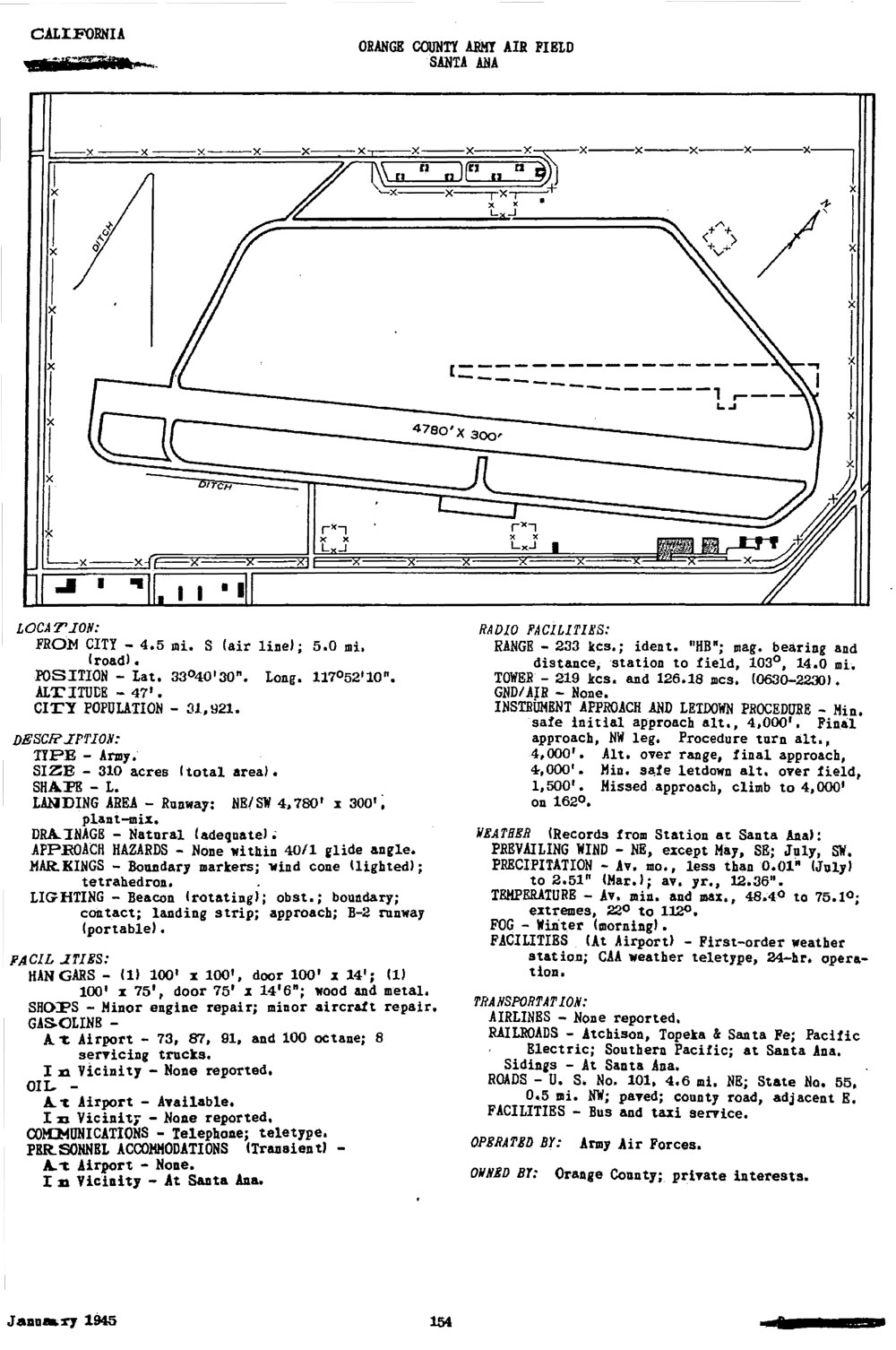County Airport, comprising 133.75 acres from Orange County. For the improvement and expansion of said airport, two other leases were executed with the Irvine Company in 1942 covering a 209.14 acre parcel and a 45.34 acre parcel. Additionally, 0.43 acres of easements were also acquired for the improvement of the airport from private parties. Total acquired property was 388.66 acres.
At that time, the developed airport was called Orange County Army Airfield. Improvements to the property included approximately 12 temporary type buildings, parking aprons, revetments, asphalt surfaced shoulders, aircraft protective concrete revetments, bomb storage revetments, lighting and electrical systems, water, sewage and storm drain facilities, runways, taxiways; fencing, and underground gasoline fueling system. The airfield was used by the Western Flying Training Command and by Headquarters, West Coast Air Corps Training Center stationed at Santa Ana Army Air Base.
The lease for 45.34 acres of Irvine Company land was terminated on 26 September 1946. On 16 January 1947, 39.64 acres of the 209.14 acres leased from the Irvine Company were released. These actions reduced the original 388.66 acres by 84.98 acres. The remaining 303.68 acres (including easements) along with the improvements, comprised Orange County Army Airfield and on 18 April 1946 this property and improvements were declared excess to the needs of the military and transferred to the War Assets Administration. In 1948, remaining leases were terminated and improvements transferred by the War Assets Administration to the County of Orange contingent upon the condition that the leased premises, together with the chattels and improvements, be used for public airport purposes.
Presently the property has been developed into a commercial and general aviation airport known as John Wayne Airport.


| Altitude, feet |
|
|
|
|
| Range*, miles |
|
|
|
|
- *Range of PPI limits GCI operation
to about 45 miles.